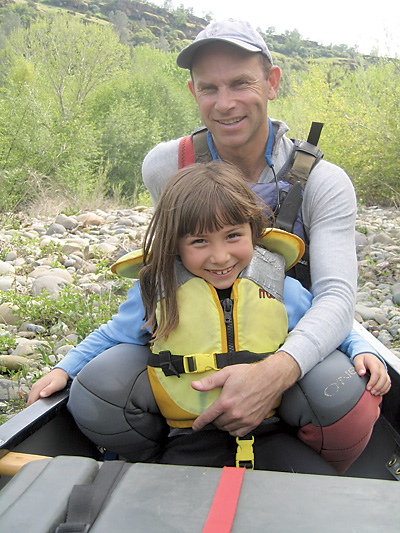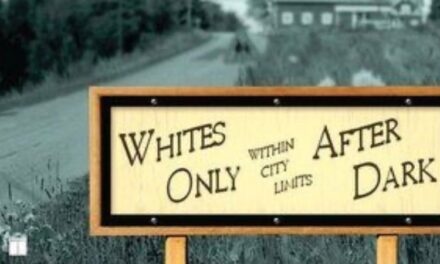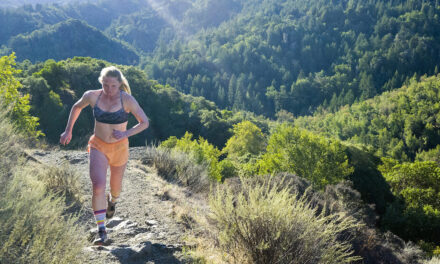- Tahoe’s Nevada Beach Tops the List of Hard-to-Book Campgrounds - 07/17/2024
- Cannabis Watershed Protection Program Cleans Up Illegal Grow Sites - 07/10/2024
- French Fire - 07/05/2024
Dave Steindorf: “Couch Potatoes Make Lousy River Advocates”
By Pete Gauvin
Bringing water back to California’s rivers and protecting public access is no sedentary job
 Although California is widely recognized to have some of the best and most plentiful whitewater boating opportunities in the world, by the time the mid-summer sun blazes over the tawny Sierra foothills there are precious few ribbons of froth left to run outside dam-control runs like the South Fork American and Tuolumne.
Although California is widely recognized to have some of the best and most plentiful whitewater boating opportunities in the world, by the time the mid-summer sun blazes over the tawny Sierra foothills there are precious few ribbons of froth left to run outside dam-control runs like the South Fork American and Tuolumne.
Over the last 10 years that’s begun to change thanks in large part to Dave Steindorf, California stewardship director for American Whitewater, a nationwide nonprofit conservation group that focuses on restoring rivers dewatered by hydropower dams, improving water quality and protecting public access.
Operating out of Chico, Steindorf, 47, helped secure the first releases in California for whitewater recreation on the North Fork Feather River in 2001. Despite this “critically dry year,” there will be three weekend releases on the North Fork this summer (July 26, Aug. 23-24, Sept. 27-28). AW also helped negotiate releases for the Tiger Creek section of the Mokelumne River (in May and June) and the Pit River (July 19-20, Aug. 16-17).
More runs may flow in the next few years. Steindorf is working on establishing releases and access on rivers from the McCloud to the Kern.
“There is something to be said for following your passion and donating your time to things you think will make a difference,” says Steindorf, a father of three who was an AW volunteer for years before joining the paid staff in 2005. “When I started this I didn’t think this would become my career. But it’s rewarding and important to feel like you’re going to make a difference for our kids and the next generation.
“There’s no better feeling than driving up along the Feather River and seeing more water in there and knowing I had a hand in that. And whether you get paid for it or are a volunteer, seeing a lasting impact like that is huge.”
A former high school economics teacher in Willows, Steindorf brings a unique skill set to his job. In addition to teaching (he has a degree in Economics and masters in Education from CSU Chico), his background includes working in outdoor retail and as a consultant working on recreation studies for hydro projects for several utilities in the West, including Pacific Gas & Electric and the Sacramento Municipal Utility District (SMUD).
Having sat on the opposite side of the table is a bit of an anomaly for a river conservation advocate. “It gives me a perspective from the other side,” Steindorf says. “A lot of this (negotiating water releases) is about building relationships with people and being able to work with a broad base of interests on all sides of the issue.”
“There certainly wasn’t any kind of prescribed plan to end up where I am now, but I think all my work experiences and interests combined to give me a good background for the job.”
His passion for rivers spools from a childhood passion for fishing, instilled while growing up in Cupertino. “My dad taught me to flyfish when I was 7 or so, and later I worked as a fishing guide up in Alaska.”
He didn’t start boating until he was in his 30s. “I had been interested in learning to kayak for a long time and it seemed like a great way to access rivers to go fishing.”
He got started in river conservation as a volunteer and club member of the Chico Paddleheads. He made a video titled “More Than Plumbing” that won the best amateur film award at the 2000 National Paddling Film Festival.
With American Whitewater, working predominately on hydro relicensing projects, he’s gained a reputation as a consensus builder. “Determining what information people need to use to make a conclusion is the first challenge,” he says. “There’s still plenty of stuff to argue on after we have a data set that we can all agree on. And if you can’t even agree on that, than we are lost.”
The Feather River relicensing process has been especially contentious over the years.
“We’re making some big changes in that flow schedule,” Steindorf says.
“There was a lot of criticism from other groups that these releases were causing harm to the ecosystem.”
“There are people who view manipulating the flow of the river for recreational boating as frivolous. Relicensing of the river that was not our first choice. We would prefer restoration of the river to provide boating access through the summer months but that would impact hydro power generation too greatly.”
“There are free flowing rivers out there that need to be protected at all cost … (But) the Feather is a system that has been significantly manipulated for more than 100 years, including pulse flows that were released throughout the summer, long before whitewater boaters came around … So this is somewhat like worrying about a dust spec in one eye while you have a plank stuck in the other.”
On the North Fork Feather, which includes the class IV-V Tobin run, Steindorf has been able to help convince agencies to provide more natural flows for the ecosystem and for boating. This means higher sustained releases with boatable flows (minimum 400 cfs in wet years; 300 in dry years) daily from May through July, while improving conditions for the overall ecosystem and meeting the needs for hydro generation.
The change in the flow schedule will not have any impact to the water levels at Lake Almanor, he stresses. “The water is coming down the system anyway it just gets put in the river bed.”
In the long run, education and getting people outdoors and into the canyons will determine whether river conservation efforts like this continue to succeed, Steindorf says.
“Most of our progress on the North Fork Feather has been due to our ability to educate the other NGO’s, agencies, and PG&E to the value of whitewater boating. However, the best way to improve people’s notions about whitewater is to get them on the river. Couch potatoes make lousy river advocates.”













